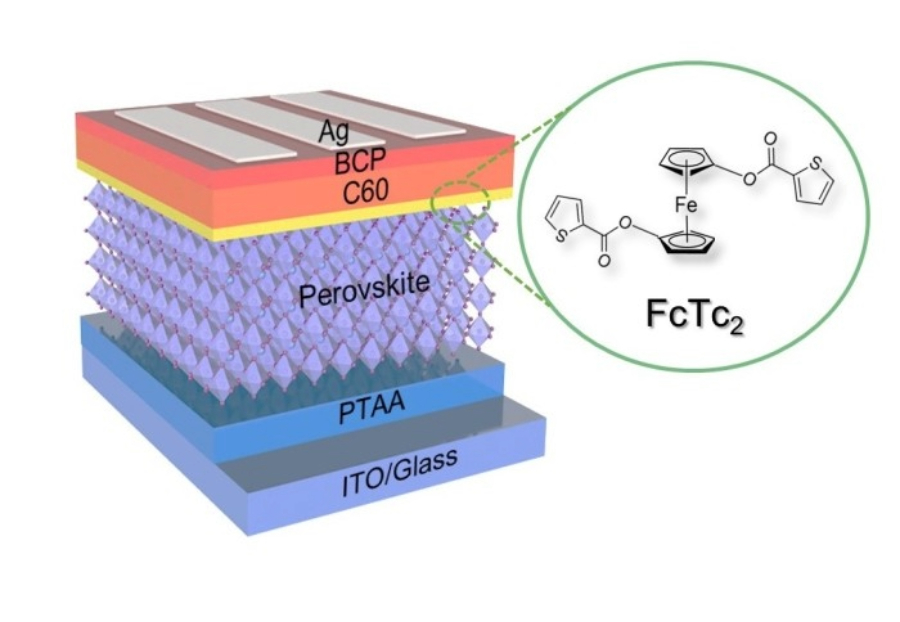Advancements in Thermal Stability of Photovoltaic Materials
Four main characteristics of solar cell technology can be easily adapted: a. high efficiency, b. stability, c. low cost, and additional qualities like d. transparency, flexibility, less rigorous, and aesthetic working conditions. The first three benefits (a, b, and c) are offered by first- and second-generation solar cells, whereas the last two (C and d) are offered by third-generation solution-processable solar cells. Perovskite solar cells (PSC) are the third generation of solar cells. PSCs have a power conversion efficiency (PCE) of 25.2%, comparable to silicon solar cells, and are cost-effective, making them promising candidates for future technological applications.
Perovskite solar cells (PSCs) have great potential, but the lack of stability exhibited by these entities under typical circumstances hinders their potential for commercialization. The widely used perovskite material MAPbI3 has a problem because the methylammonium iodide (MAI) component volatilizes upon heating. Moisture and air accelerate volatilization. Multiple reasons cause perovskite solar cell (PSC) deterioration. Perovskite layer instability, like the thermal instability of the methylammonium (MA) molecule, is important. The device’s hole transport medium (HTM) or electron transport media (ETM) instability accelerates deterioration. Many attempts have been made to improve perovskite solar cell thermal stability. There are different chemical compositions of perovskite and different hole, electron, and no electron transport layers.
A phase-stable CsxFA1−x PbBrxI3−x perovskite was fabricated through a “two-step” technique by incorporating a certain concentration of CsBr (10%) into PbI2. This modification resulted in a notable enhancement in the PCE and a high PCE of up to 14.14% was achieved on the PSC device by controlling the concentration of bromine (Br) and cesium (Cs). This was accomplished using the Cs0.1FA0.9 PbBr0.1 I2.9 perovskite formulation. Furthermore, the device that was created demonstrated exceptional resistance to both humidity and heat. Additionally, thermal cycling experiments exhibited enhanced stability compared to the FAPbI3 and MAPbI3 perovskites in carbon-based PSCs.
Similarly, the thermal stability of CsxMA1−xPbI3 film and solar cells is evaluated by the inclusion of Cs in the precursor solution, which leads to an inevitable enhancement in the film deposition rate. Consequently, this results in a reduction in grain size and an increased presence of Cs atoms in the film compared to the precursors. A modest level of Cs doping (x = 0.09) was found to have a positive impact on the thermal stability. Furthermore, the incorporation of Cs doping was found to significantly improve the performance of the device. Finally, the ultimate achievement of Cs0.09MA0.91PbI3 in terms of performance yielded an efficiency of 18.1%. Furthermore, the thermal stability of the encapsulated devices with a value of x = 0.09 exhibited a notable enhancement in comparison to MAPbI3.
The utilization of hole-transporting materials based on nanographene, in conjunction with a pyrene derivative as an interface modifier, is explored for the purpose of enhancing the thermal stability and efficiency of PSCs. The HBC-DPAMeOMe nanographene core incorporates an arrangement of diphenylamino groups, wherein both methyl and methoxy groups are asymmetrically inserted. The power conversion efficiency of perovskite and HBC-DPAMeOMe is increased to over 23% through the coupling of 1-Pyrenemethylammonium iodide, hence enhancing the chemical connection between the two materials. The results of a thermal stability test conducted at 85 °C for a duration of 1000 hours indicate that the device utilizing HBC-DPAMeOMe retains 83.6% of its initial efficiency (23.04% → 19.25%). In contrast, the device employing spiro-MeOTAD experiences a substantial decrease in efficiency, dropping from 20.69% to 5.08%. The utilization of hole conductors based on nanographene offers insights into addressing the thermal stability challenge in perovskite solar cells (PSCs).
A dimeric acceptor with a dumbbell-shaped structure, known as DT19, has been effectively formulated and synthesized. The PM1: BTP-eC9 system includes an additional component, which is implemented as the third element. The utilization of a ternary method showcased a notable improvement in both the PCE and thermal stability of the host binary system. The PM1: BTP-eC9: DT19 system demonstrates a sustained power conversion efficiency (PCE) of over 90% even following exposure to a temperature of 120 °C for a duration of 200 hours. Furthermore, it surpasses ternary systems incorporating acceptors with alloy-like characteristics in relation to thermal stability. The novel dimeric material exhibits the potential to significantly improve the efficiency and thermal stability of active layers in devices, hence offering attractive prospects for its application.
The use of crystalline thermoplastic polymer additives, specifically a blend of polyethylene oxide (PEO) with a molecular weight of 100,000 and polyethylene glycol (PEG) with a molecular weight of 12,000, has been found to enhance the thermal stability of CH3NH3PbI3 (MAPbI3) perovskites. This improvement in thermal stability subsequently leads to enhanced stability of the devices utilizing these perovskites. The production of perovskite films with superior quality and reduced defects was achieved through the promotion of a robust interaction of the PEO + PEG mixture and the unbound Pb2+ ions in MAPbI3 perovskites. This interaction resulted in a notable power conversion efficiency exceeding 18%, even in the presence of insulating thermoplastic polymers within the MAPbI3 film. The aforementioned examples present a viable approach in thermoplastic polymer additive engineering, aimed at enhancing the thermal stability of PSC.
Source

